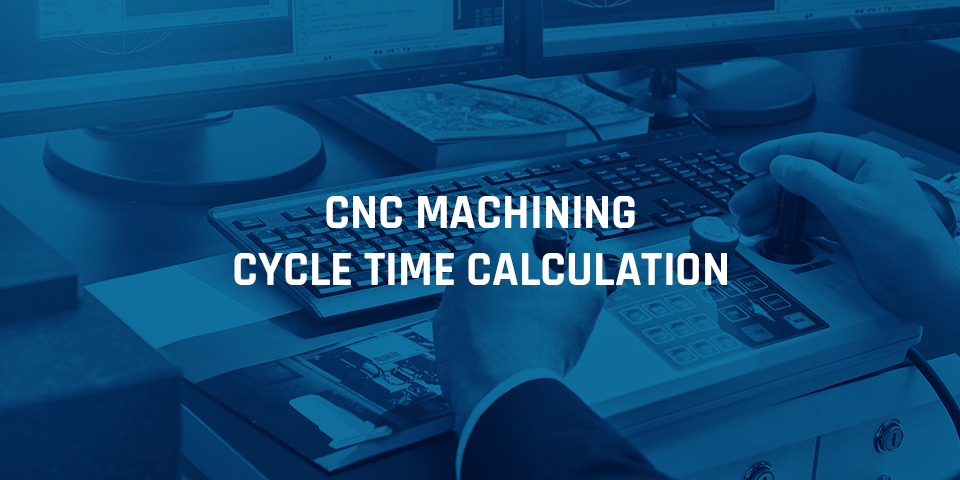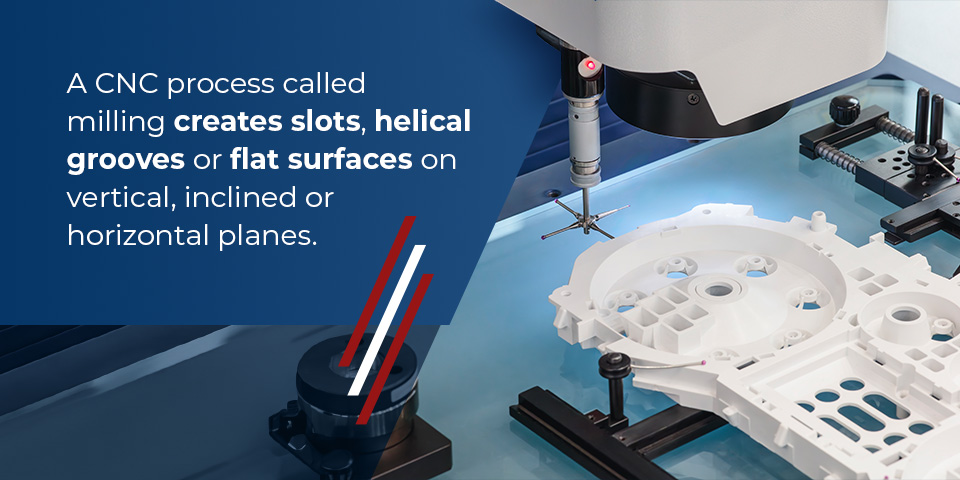


Jump to:
When you require unique parts you can’t find elsewhere, computerized numerical control (CNC) machining is a process that can craft precise components for any industry. With our complete manufacturing facility, high-quality materials and customization abilities, American Micro Industries can manufacture parts to match your drawing specifications.
But if you’re working on a machining project on your own, it’s important to know CNC machining cycle time and how to calculate it. Continue reading to better understand the necessary calculations and when to use them.
CNC machining is a process where programmed computer software controls the movements of your production equipment. The technology takes a virtual design, often from a CAD program, and transforms it into a physical part made of the specific material you need, such as:
CNC machining replaces manual labor to create precise and unique parts, no matter your industry. Whether you’re in the automotive, aerospace, electronics, military, medical or security sector, CNC machining will likely benefit you. When you demand mass-produced pieces that meet specific requirements, CNC machining can develop and deliver accurate and precise solutions.
Learn About Our CNC Machining Services
CNC machining cycle time measures how long a single machining operation takes to complete. Engineers use cycle time data to find production bottlenecks. Production managers rely on cycle time calculations to create accurate schedules.
Understanding cycle time provides key business benefits. Estimators create more accurate quotes using cycle time data. Manufacturers reduce product lead times by improving cycle time efficiency. Project managers align production with budgets using cycle time insights. Teams meet project timelines when they control cycle time effectively.
The cycle time formula connects cutting distance, feed rate, and spindle speed. CNC operators adjust these variables to balance efficiency and quality. Many professionals program these calculations into calculators for daily use. Different machining operations require specific cycle time calculations.
Turning operations have cycle times based on workpiece size and material type. Milling operations produce cycle times affected by cutting strategy and material removal rate. Screw machining has unique cycle time considerations. All operations follow the basic formula: machining time equals cutting length divided by feed rate.
Manufacturers improve cycle times by optimizing each production step. Reducing setup time eliminates wasted minutes. Selecting proper tools speeds up cutting operations. Optimizing cutting parameters balances speed with tool life. Efficient tool paths reduce total cutting distance. These factors together determine the total cycle time.
By analyzing and improving cycle time, manufacturers achieve higher productivity and better cost control. The cycle time formula provides a consistent way to measure and improve machining efficiency.
The basic CNC machining formula is length or distance divided by speed or rate. This formula makes it possible to calculate machining time by using one of its derivatives:
Depending on the project, you may need to replace millimeters with inches.
Let’s start with an example in inches with an expected goal of the following:
The time needed to drill the hole will result in decimal minutes you need to convert to seconds:
Once you know how long it will take to drill the hole, you will want to determine the feed rate in inches per minute (IPM), which means you have to calculate the spindle revolutions per minute (RPM) and calculate the feed rate in inches per minute, as most handbooks have feed in inches per revolution (IPR). Then, because speed recommendations are often provided in surface per minute (SFM) calculations, you will need the following two formulas to help you finish the calculations:
Depending on the tool, the feed rate may be in “per tooth,” which we will dive into when talking about CNC milling machining time calculation. In that case, the formula would be the following:
It’s simple to apply these formulas to many operations — unless the diameter changes during the machining process. For example, if you’re working on a project that requires multiple passes, the constant surface speed will cause the spindle speed in revolutions per minute to change in relation to the diameter. Therefore, you will need to calculate a new RPM and IPM feed rate for every turning pass.
While that is the general formula, there are differences between milling and turning machine calculations.
Learn About Our CNC Machining Services

A CNC process called milling creates slots, helical grooves or flat surfaces on vertical, inclined or horizontal planes. In this case, the CNC machining time estimation may measure the feed rate per tooth, meaning you need to know the number of flutes, teeth or cutting edges on the specific tool you have.
When using the original formula for assistance — Machining Time = Length of Cut (mm) / Feed (mm per revolution) x Revolutions Per Minute — the calculation for CNC milling machining time is:
Machining Time = Length of Cut (mm) x Number of Passes / Feed (mm per revolution) x Revolutions Per Minute.
The specifications for this calculation include:
Here, accuracy is key to obtaining the best machining time estimate.
The formula for calculating turning cycle time also comes from the basic formula of Machining Time = Length of Cut (mm) / Feed (mm per revolution) x Revolutions Per Minute. The specifications of this calculation would include:
The process of turning machining is when a single point tool on a lathe machine creates turned parts. To manufacture rotational — and often complex — shapes, you need to use a toolpath that feeds the tool either in either a linear or perpendicular to the piece’s rotation axis. This process involves two different motions:
Now that you know how to calculate cycle times, it’s important to note how this information can help you improve your business.
One place to start is by paying attention to potential process optimizations. All of the steps involved in a CNC machining cycle impact how long the operation will take, and optimizing each piece of the process can help you keep this time to a minimum. Some of those components include:
Any non-productive time spent overcoming delays, loading CAD files and warming up the machine also contributes to the total cycle time. Pinpointing the causes of this unproductive time can help you achieve greater efficiency for better cycle times.
Learn About Our CNC Machining Services
At American Micro Industries, we’re driven by quality. Our experts use your ideas, drawings and CAD designs to create hard-to-find parts using the most suitable materials. We strive to exceed your manufacturing expectations from end to end so you can grow your business.
For more information, request a free quote or call an American Micro Industries representative at 866-774-9353.